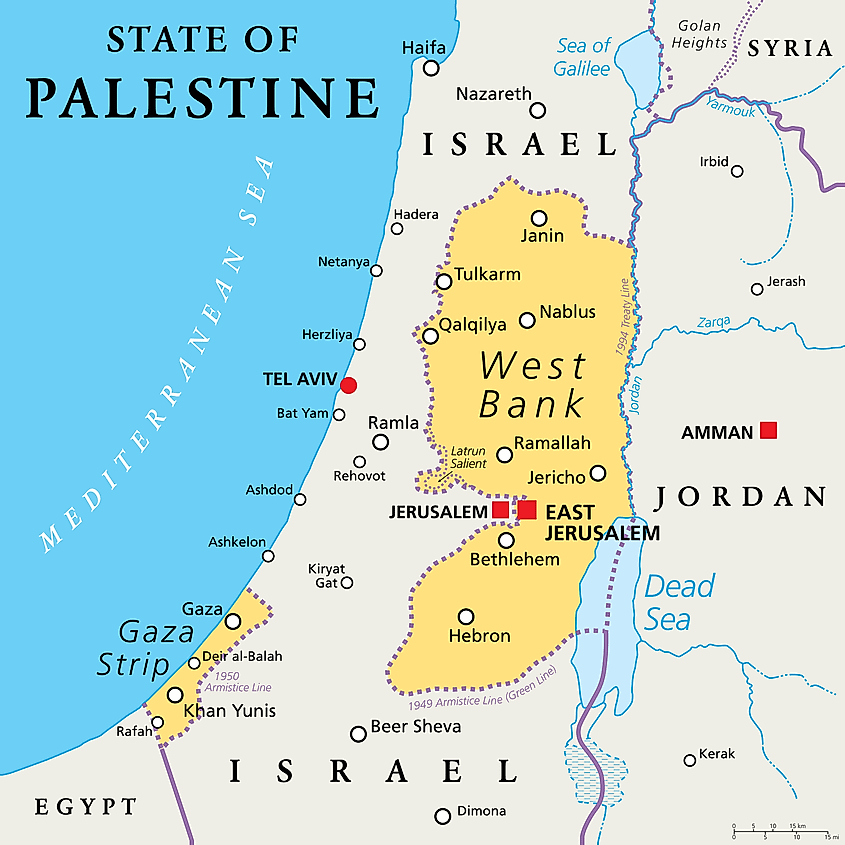The Gaza Strip, a small enclave located on the eastern coast of the Mediterranean Sea, captivates attention for its compelling juxtaposition of size, geography, and intricate political context. With a length of approximately 41 kilometers and a maximum width of 12 kilometers, this territory spans about 365 square kilometers. To put this into perspective, its land area is roughly comparable to that of the city of Detroit or the country of Luxembourg. Despite its modest size, the Gaza Strip bears an extraordinary weight on the global stage.
This fascinating microcosm of human experience and conflict is bordered by Israel to the north and east, by Egypt to the southwest, and the Mediterranean to the west. Its geographic positioning renders it a strategic and politically significant region, amplifying the complexities of its standing in international discourse. The terrain of Gaza consists predominantly of flat, sandy beaches along the coast, with a landscape that transitions into arable land, supporting agriculture that serves as one of its main economic sectors. Nevertheless, the constraints imposed by political turmoil impede the full utilization of its agricultural potential, starkly demonstrating how geography and politics entwine in shaping human fortunes.
The persistent fascination with the Gaza Strip can be traced to its historical legacies and the biblical connotations associated with the region. In the Christian tradition, Gaza features prominently as one of the five city-kingdoms of the Philistines, mentioned in various texts of the Old Testament. The city’s historical significance as a crossroads of trade and culture highlights its enduring place in the annals of human civilization. This ancient past accounts for a longing, a deeper connection to the land that resonates with many Christians and scholars alike, who view it through the dual lenses of faith and history.
Moreover, the modern political landscape of the Gaza Strip is fraught with tension, having endured decades of conflict and enclosure. The geopolitical quagmire is at the forefront of global consciousness. Since the 2006 elections, where Hamas assumed control, the Strip has experienced increasing isolation due to blockades imposed by Israel and a series of hostilities. This isolation perpetuates a humanitarian crisis, wherein the majority of the population relies on foreign aid for sustenance and survival. Here, we find an impetus for profound reflection on human dignity, community, and the moral imperative to seek justice—a tenet deeply rooted in Christian ethics.
In the face of adversity, the resilience of the Gaza populace is noteworthy. Against a backdrop of economic hardship and societal fragmentation, communities exhibit an indomitable spirit marked by solidarity and hope. The refugee camps, where many inhabitants have settled, serve as microcosms of a broader struggle for existence—each camp bursting with stories of endurance. The juxtaposition of despair and hope creates a narrative that is both tragic and inspiring, evoking biblical themes of perseverance amidst tribulation.
The geographical constraints of the Gaza Strip further complicate its socio-economic landscape. With a population density that ranks among the highest in the world, the pressures on infrastructure and resources are substantial. Access to clean water, healthcare, and education often remains under duress, opening avenues for exploration of the theological implications of stewardship and care for one another. How does one reconcile the pressing need for humanitarian support with the intricate political realities? This ongoing dilemma invites Christians to engage in compassionate advocacy while fostering dialogue centered on reconciliation and peace.
The moral questions arising from this situation bear a resemblance to biblical narratives of oppression and liberation. The Exodus story, for example, resonates powerfully within the Gaza context. Just as the Israelites sought freedom from bondage, the inhabitants of Gaza continue to yearn for relief from their plight. This parallel serves as a reminder that, irrespective of geographic and political realities, the divine call for justice, mercy, and compassion transcends borders and ideologies.
Furthermore, the international community, including Christian organizations, plays an essential role in addressing the challenges facing Gaza. Initiatives aimed at providing humanitarian aid and promoting peacebuilding efforts are vital. By reaching out to the people of Gaza, these organizations embody Christian values that advocate for the marginalized and oppressed, responding to the Biblical call to “love thy neighbor.” In doing so, they seek to foster understanding and reconciliation amid layers of mistrust and animosity.
In conclusion, the Gaza Strip is a geographic area of intriguing dimensions that evoke profound reflections on politics, faith, and our shared human experience. Its physical size belies the immense complexities contained within its borders, underscoring important themes of history, resilience, and the moral imperatives that challenge us all. As Christians navigate this landscape, the call to engage with compassion, to foster dialogue, and to work towards justice becomes ever more pressing. The struggles of Gaza serve as a clarion call for courage, urging all to dismantle barriers—of both heart and mind—and to build a pathway towards healing and reconciliation that echoes throughout the corridors of history.



